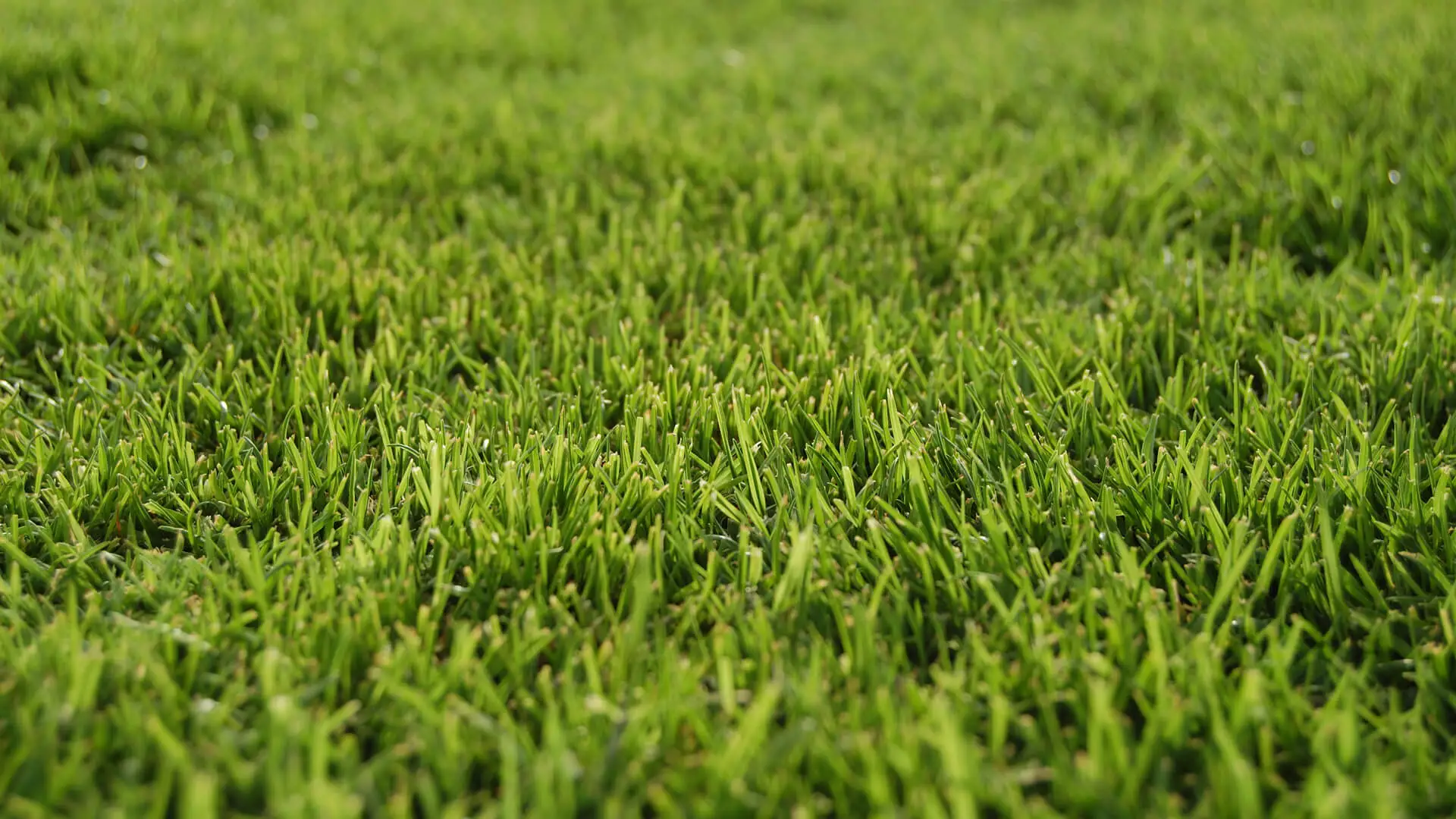The main grasses in Memphis are Bermuda grass, Zoysia, and Fescue. All three have special characteristics and require special care. Here at Herbi-Systems we are the experts on these grass treatments in Memphis and have been for more than 39 years. We know communication is the key to a great relationship, that is why we will faithfully provide information on growing these grasses, the best grass seed for Memphis, Tennessee, and more. The more you know about your lawn, the better prepared you will be in making the right decision.
- Bermuda Grass
- Zoysia Grass
- Fescue Grass
- Helpful Hints on Mowing
- Helpful Hints on Watering
Bermuda Grass in Tennessee
Taking good care of your Bermuda grass is worth the effort and does not require long hours. A lawn that is properly mowed, fertilized, and watered has far fewer problems with weeds, diseases, and insects. A well-kept lawn also remains dense and attractive, providing more enjoyment with environmental benefits.
Mowing Bermuda Grass
In the spring, Herbi-Systems recommends a “buzz cut” for Bermuda. A buzz cut means lowering the mower blade as low as it will go, and then removing the clippings. After that, Herbi-Systems suggests a mowing height of 2.5 to 3.5-inches through the growing season. Slow growth equals less mowing. Mow regularly with a sharp rotary or reel mower, and allow the clippings from frequent mowing to remain on the lawn. Leave the grass taller in fall and winter so that the dormant blade will act as a protective blanket during the coldest months. We recommend the following heights for fall and winter:
- Common Bermuda grass – 3.0 to 3.5-inches
- Hybrid Bermuda grass – 2.5 to 3.0-inches
Watering Bermuda Grass
Watering Bermuda grass is not as imperative as watering other grasses. Bermuda grasses in Memphis love the sunlight and are fairly drought resistant. Watering is more important after dry fertilizer has been applied. The granular pellets will need to be watered down into the soil for the best results. As a basic rule, we recommend 1.5-inches of water, two or three times a week. Avoid frequent, shallow watering that results in underdeveloped roots, permitting weed germination and growth. Always water Bermuda thoroughly after fertilization. Bermuda grass can be seeded or sodded in the spring. Many factors can hinder the germination of the seed, and can take longer to establish than sod. Within one growing season, however, it should be fully established.
Interesting Bermuda Grass Facts
Bermuda grass is considered the “South’s Grass,” a favorite in texture and color for all areas of usage. The downside to Bermuda grass is the aggressive quality that also makes it so popular. Flower beds or other adjacent areas can be overrun if not kept in check by constant edging or applications of herbicides. Known as one of the most persistent and aggressive grasses grown, it is very hard to kill after establishment. Bermuda grass is one of the grasses that can “return from the dead” if not completely killed the first time due to its extensive root system. Just digging it up without getting rid of the roots will not solve the problem.
Bermuda Grass vs Fescue Grass
Bermuda grass is coarser in texture, making it better for warmer climates. Whereas Fescue grass is a cool-season grass. The Bermuda grass also has an invasive growth habit and will take over other grasses, unlike Fescue grass.
Zoysia Grass in Tennessee
Zoysia grass, an eco-friendly grass, is popular in the South for its resiliency. The resiliency comes from the Zoysia turf that forms a dense sod by growing stolons or “runners” thus offering more protection against weeds and insects than other grasses. It has fine to medium textured leaves, which provide a thick, cushiony feel of lush carpet.
Varieties of Zoysia grass have different textures ranging from coarse to fine. Newer varieties can now be planted from seed, which in the past were only propagated through Zoysia sod, sprigs, and plugs. Lawns planted with sprigs or plugs may take up to two years to fully develop into the thick density that a Zoysia grass lawn is capable of producing. Lawns with Zoysia sod in Memphis will be quicker to establish than sprigs or plugs and under ideal conditions can be established in five months. After Zoysia grass becomes established, the aggressive, dense growth will crowd out weeds and other grasses. In the South, Zoysia grass has good shade tolerance, making it well-suited for areas with at least six hours of sun. Herbi-Systems generally uses Zoysia sod in April.
Watering Zoysia Grass
Watering your Zoysia lawn is similar to watering a Bermuda grass lawn. We recommend .75-inches of water for a deep soaking every four to seven days. Deep watering encourages a deep, healthy root system during dry or hot periods. Avoid frequent, shallow watering that results in underdeveloped roots, permitting weed germination and growth. Always water Zoysia grass thoroughly after fertilization.
Seeding or Sodding Zoysia Grass
Varieties of Zoysia grass have different textures ranging from coarse to fine. Newer varieties can now be planted from seed, which in the past were only propagated through Zoysia sod, sprigs, and plugs. Lawns planted with sprigs or plugs may take up to two years to fully develop into the thick density that a Zoysia grass lawn is capable of producing. Lawns with Zoysia sod in Memphis will be quicker to establish than sprigs or plugs and under ideal conditions can be established in five months. After Zoysia grass becomes established, the aggressive, dense growth will crowd out weeds and other grasses. In the South, Zoysia grass has good shade tolerance, making it well-suited for areas with at least six hours of sun. Herbi-Systems generally uses Zoysia sod in April.
Interesting Zoysia Grass Facts
The growth pattern of the Zoysia grass leaves makes it suited for higher traffic locations but is sometimes uncomfortable for bare feet. Zoysia grass withstands heavy usage after full establishment. High-density Zoysia sodding makes this grass well-suited for use on lawns during summer growth months. Zoysia grass can form thatch but doesn’t attract as much disease and insect damage as some of the other warm-season grasses. It has good drought resistance once established and becomes a dense, thick turf that crowds out weeds after several mowings. With the onset of the first cold snap, it will go dormant, turning golden brown. Zoysia grass makes one of the most beautiful, carpeted lawns when fully established.
Zoysia vs Bermuda Grass
Zoysia grass grows best when in light to medium sunlight, whereas Bermuda grass prefers direct sunlight. Another difference is that Zoysia grass holds its color better than Bermuda grass does. While Bermuda grass is more drought-resistant, Zoysia will hold onto its gorgeous green color longer.
Mowing Zoysia Grass
Spring is the time to buzz cut Zoysia grass. Mow the lawn as low as the mower will permit and remove the clippings before a cold spell. This action will allow the sun to warm the ground and encourages a green lawn in a shorter amount of time. We then recommend a mowing height for Zoysia of 1.5 to 2-inches. Periodically, mowing in a different direction may be needed to control thatch accumulation.



Comments (0)
Thanks for your comment!
Thanks for your feedback! Your comments have been successfully submitted! Please note, all comments require admin approval prior to display.
Error submitting comment!
There is a problem with your comment, please see below and try again.